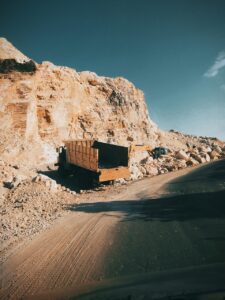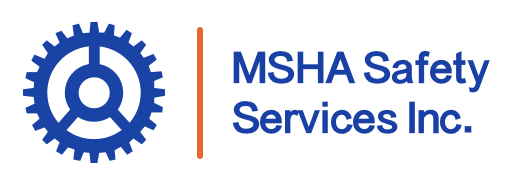Ensuring highwall safety in mining operations requires effective water and drainage management to prevent erosion, instability, and hazardous working conditions. Poor drainage can lead to structural failures, endangering workers and equipment. In this guide, we will explore the key factors involved in water management for highwall safety, best practices, and regulatory considerations.
The Importance of Water and Drainage Management for Highwall Stability
Proper water and drainage management is crucial for maintaining highwall stability in mining. Water accumulation can weaken the integrity of highwalls, leading to landslides and failures. By implementing effective drainage systems, mining operations can prevent costly repairs, enhance worker safety, and improve operational efficiency.
Key Strategies for Preventing Water-Induced Highwall Failures and Collapses
Water accumulation can significantly weaken highwalls, increasing the risk of failures and collapses in mining operations. To mitigate these risks, it’s essential to implement proactive measures that effectively manage water flow and maintain the stability of highwall structures. Key strategies include:
- Installing drainage channels to redirect water away from highwalls.
- Using geotechnical monitoring tools to detect early signs of water accumulation.
- Implementing slope stabilization techniques, such as rock bolting and shotcreting.
- Maintaining regular inspections to identify and address water-related issues.
How to Design Effective Drainage Systems for Highwall Safety
Designing an effective drainage system involves assessing the terrain, water flow patterns, and soil composition. Key elements of a well-designed system include:
- Surface drainage: Channels and ditches that redirect rainwater away from highwalls.
- Subsurface drainage: Pipes and gravel layers that prevent groundwater buildup.
- Pumping systems: Used in deep mining sites to remove excess water.
The Role of Surface and Groundwater Control in Highwall Mining
Managing both surface and groundwater is essential for highwall safety. Surface water control involves diverting rainwater using ditches and grading, while groundwater control requires dewatering wells and pumps to reduce subsurface water pressure. Integrating both methods ensures stable highwall conditions and prevents unexpected collapses.
Water Flow Management and Monitoring Technologies for Highwall Safety
Technological advancements have improved water flow management in mining operations. Some of the key monitoring technologies include:
- Remote sensing tools to track moisture levels.
- Automated water level sensors to detect rising groundwater.
- Real-time data analytics to predict potential water-related hazards.
- Drones for aerial surveys of drainage patterns and erosion areas.
The Impact of Improper Water Management on Highwall Safety
Neglecting water management can result in:
- Structural instability leading to collapses.
- Equipment damage due to flooding.
- Increased risk of worker injuries.
- Regulatory fines and shutdowns.
Proactive drainage management reduces these risks and ensures sustainable mining operations.
Regulatory Requirements for Water Management in Highwall Mining
Mining operations are subject to strict regulations designed to ensure water management practices protect worker safety and the environment. Adhering to these regulations helps prevent highwall instability, environmental degradation, and potential legal liabilities. Key regulatory bodies and specific regulations include:
- MSHA (Mine Safety and Health Administration): MSHA enforces safety standards for mining operations, including the management of water around highwalls. Regulations under the Federal Mine Safety and Health Act require operators to implement effective drainage systems to prevent water accumulation that could destabilize highwalls. Operators must also monitor water levels, especially in underground mines, to prevent excessive pressure that could cause collapses.
- EPA (Environmental Protection Agency): The EPA enforces regulations regarding the discharge of water in mining operations under the Clean Water Act. Mining companies are required to obtain permits for water discharges, ensuring that runoff from the site does not harm nearby water bodies. Regulations also address water quality management to prevent contamination of local groundwater and surface water.
- Environmental Impact Assessments: Mining companies must conduct thorough environmental assessments as part of the regulatory process. These assessments include a detailed plan for managing water runoff and erosion, as well as the long-term environmental impact of the mining operation on water resources. It’s critical for mining companies to regularly update their water management plans to stay compliant with evolving regulations.
By adhering to these regulations, mining operations can avoid fines, prevent environmental damage, and ensure a safer working environment.

Innovations in Water Control Systems for Highwall Mining Operations
Recent innovations in water control systems include:
- Smart drainage networks with IoT-enabled sensors.
- Eco-friendly filtration systems to reduce environmental impact.
- Advanced geosynthetics for water redirection and soil stabilization.
Ensuring Highwall Stability Through Effective Water and Drainage Management
Investing in proper drainage systems and water control strategies is crucial for maintaining highwall stability and ensuring safety in mining operations. Proper water management helps prevent erosion and collapses, keeping highwalls structurally sound and reducing risks to workers and equipment. By following best practices, using modern technology, and meeting regulatory requirements, mining companies can avoid costly accidents and delays. Focusing on water management also contributes to long-term sustainability, creating a safer work environment while minimizing environmental impact.
